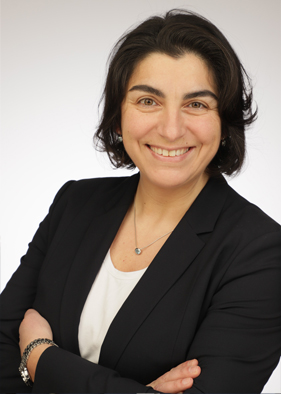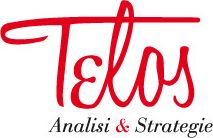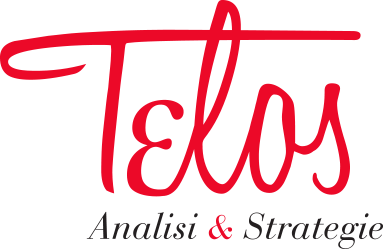October 2023, Year XV, no. 10
Dilek Gürsoy
A Woman of Heart and Mind
“When I decided to pursue cardiac surgery, I knew it was a male domain but I wanted to follow my passion and nothing could stop me, and why should I?”
Telos: You were the first woman in Europe to implant an artificial heart into a patient, and as a pioneering surgeon you helped to develop a new artificial heart. Could you tell all about this?
Dilek Gürsoy: Yes, that's right. At the time of the operation in 2012, the representatives of the artificial heart company that I implanted asked me whether I was aware that I was the first woman in Europe to operate on such a total artificial heart. Of course, I didn't know that and I didn't care. I had operated on many such procedures again and again, but never from start to finish. It is always important to me that the operation runs smoothly and cleanly. And yes, I've been actively involved in artificial heart research since 2010. First, I had the great fortune and honour of operating a German left ventricular assist system and a total artificial heart in the research laboratory on animals. This was followed by orders from other European and Scandinavian countries, which I have been able to accompany to this day and hopefully in the future as a surgeon. The goal of artificial heart research is not only to provide a temporary bridge until heart transplantation, but to offer a genuine alternative. The artificial heart should be designed in such a way that it fits into any chest (male/female) and operates flawlessly from a technical perspective for over 10 years.
Daughter of a Turkish working-class family who emigrated to Germany in 1969 as guest workers, you didn't exactly have the best starting conditions. When did you know that you really wanted to be a surgeon? And how did you pursue your goal?
Yes, I'm a working-class child, but that's exactly what makes me special. I learned from an early age what it means to work hard and, above all, honestly and honourably. My mother always said to me that I had to be something better than her. I always knew that I wanted to be a doctor, nobody had to tell me that. And I was very fortunate that I also had these opportunities in this country, namely to go to school and then to study. I simply took advantage of these opportunities and never lost sight of my goals. That's it, and it's actually quite simple sometimes.
You have asserted yourself in the purely male world of artificial heart therapy. Moreover, in there seems to be a strong hierarchical organisation in the field. Is this really the case in practice and does it also have an effect on the culture and working atmosphere in medicine and surgery?
When I decided to pursue cardiac surgery, I knew it was a male domain but I wanted to follow my passion and nothing could stop me, and why should I? I was aware of my abilities and convinced of my motivation. As a junior doctor, you pose no danger to your male colleagues, on the contrary, they encourage you, they teach you a lot. However as soon as you become more surgically experienced and self-confident and know what you can do and make demands, then you quickly come across to the glass ceiling. Actually, that's the problem of every strong, talented woman, isn't it?
What’s next?
For about 5 years I have had the desire to establish my own private clinic for heart surgery and cardiology. I am currently in the process of doing this. The management team is set, only women by the way, the medical staff is set, the city is clear, the building is clear, only the financial commitment is missing. But, God willing, I'm close. Maybe it will take a while, but giving up the project is not an option for me, it's my goal and I usually achieve my goals. The research work will also continue, and I hope to develop a viable alternative for heart transplantation.
Marco Sonsini
Editorial
When Christiaan Barnard transplanted the first heart on 3 December 1967, the time wasn’t ripe yet. But he was bold. Then, one night in Italy between 13 and 14 November 1985, Prof Vincenzo Maria Gallucci performed the first heart transplant in the cardiac surgery unit of Padua. The patient’s name was Ilario Lazzari, a carpenter from Vigonovo with a grave form of dilated cardiomyopathy. He gave life and hope to a man and to many others who were suffering, people who would not have to endure the overseas “journey of hope” ever again. Not everyone knows that on 4 April 1969 the first artificial heart was transplanted into a man; however, the first permanent artificial heart arrived in late 1982 with “Jarvik-7”, named after its developer Robert Jarvik. Today, according to our guest in the October issue of PRIMOPIANOSCALAc, total artificial hearts are still only considered a ‘bridge’, as patients sit on waiting lists for a ‘real’ heart. However, she doesn’t agree. She believes that they should be an actual therapeutic choice for patients suffering from advanced heart failure who have exhausted all their pharmaceutical alternatives. This is the goal of her research. Who is it we’re talking about?
We’re talking about the German, of Turkish descent, heart surgeon Dilek Gürsoy, who has been pioneering research on artificial hearts for over a decade in order to try and come up with a real alternative to transplants, even more crucial given the low rates of organ donation. She pays particular attention to female anatomy, because as she tells us, “The artificial heart should be designed in such a way that it fits into any chest (male/female) and operates flawlessly from a technical perspective for over 10 years.” The problem with organ donation is very widespread even in Italy, despite the fact that the Italian organ donation rate is still one of the highest in the world. At the European level, Italy ranks third, with 24.1 donors per 1 million inhabitants, after Spain (40.8) and France (24.7) and before Great Britain (19.8), Germany (11.1) and Poland (10.5). In particular, our country had the highest rates for liver transplants (23.1 per 1 million inhabitants), on par with Spain.
Although as the Italian National Transplant Centre says, “Can you measure generosity? Or calculate altruism? Yes, there is a way and it even has a name: it’s call the donor index.” Even this year, the Centre has lined up the most generous municipalities in Italy in terms of organ and tissue donation, providing us with a snapshot of Italian municipalities’ great commitment to registering residents’ desire to donate their organs or tissues when they are issued an identity card. Corato, in the province of Bari, is ranked the most generous municipality in Italy, and Tuscany is the most generous region in terms of actual donations. Dr Gürsoy is spot-on in her focus on researching the artificial heart and cardiac assist devices that can save lives. Too many people die while they still are waiting for a donation.
Dilek’s story is very unique. The daughter of a family of workers who emigrated from Turkey to Germany in 1969 as guest workers, she grew up in Neuss, in North Rhine-Westphalia. She is very close to her family and lost her father to sudden cardiac arrest when she was just 10 years old. She calls her mother “my heroine” for raising her and her brothers as a single mom, working for over 40 years in a factory.When we asked about her challenging beginnings, she answered without any pietism, saying, “I was very fortunate that I also had these opportunities in this country, namely to go to school and then to study. I simply took advantage of these opportunities and never lost sight of my goals.”
For the 2023 covers of PRIMOPIANOSCALAc, we thought we would create something akin to museum merchandise using the faces of our protagonists. Each month we personalise an item using the black and white face of our guest. So, a t-shirt, a magnet or a shopper becomes a memory, an experience, a symbol. Our guests transform into true icons, just like museum pieces such as Da Vinci’s Vitruvian Man, Van Gogh’s sunflowers, Michelangelo’s Creation of Adam in the Sistine Chapel… Each of them becomes so iconic, we have decided to treat them like pop stars, singing on social media. For Dilek, we have chosen a heart-shaped pillow! A red one! Not quite in line with the palette of this year’s covers, but how can you say no to red? And the song we’ve picked is about a broken heart. Wait and find out!
Mariella Palazzolo

Dilek Gürsoy is a German cardiac surgeon and artificial heart specialist of Turkish descent, and one of the leading experts on the field of artificial hearts and circulatory support systems. Currently she is researching on an artificial heart that works without any cables or external driving system. Dilek graduated from the University of Düsseldorf, then she worked as assistant physician, specialist and assistant medical director. She has been on the Prof. Reiner Körfer’s team to develop a new type of artificial heart.
Since 2019, she is consultant surgeon and director of Left Ventricular Assist Device (LVAD) program at the cardiac surgery department at the Helios-clinic in Siegburg. In 2022, she was honoured as one of the BBC 100 Women.
Dilek’s father, a Turkish immigrant worker, passed away, due to a sudden cardiac arrest, when she was 10. Since then, her mother, raised her, and her two older brothers, alone. She is now retired after working in a factory for 47 years.
Born in 1976 in Neuss, Dilek is an enthusiastic football fan and her heart beats for Borussia Mönchengladbach! What did she tell us about herself? “Networking is one of my most important qualities and that in another life, I would have loved to have been a puppy breeder,” and added “My biggest success so far? I haven’t achieved it yet…”
According to her, the best rewards after a hard week at work are “good food, ice cream, and good music.”
Marco Sonsini







SocialTelos